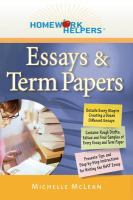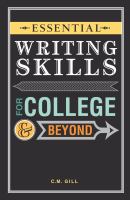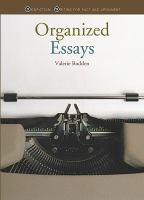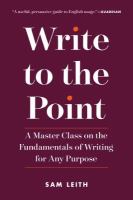LIBRARY BLOG
How to Write an Informative Five Paragraph Essay
It’s Monday afternoon, your informative five-paragraph essay on your favorite animal is due Friday, and you haven’t even started. Don’t worry, I’m here to help! Follow these simple steps to draft the first version of your essay. Once you finish your draft read over it and make any needed changes. Don’t stop there! Have a parent, relative, or friend read over your work. This is an important step because your writing must make sense to others. While your essay may “sound” right to you, it may not be the best way to word it for someone else. Finally, make any edits suggested by your reviewer. BAM you have an informative essay ready to be turned in!
Where do I start?
First, you will have to be familiar with what style your essay needs to be written in: informative, persuasive, or argumentative. Your teacher will determine which essay style is required. For the sake of this example we will focus on informative writing.
So, what is an informative essay? It is an academic paper that’s written with the main purpose of informing the audience about an object, person, event, or phenomenon. Meaning, this type of essay requires you to gather information about your topic. Your goal is to answer the prompt question by explaining the topic in detail.
Second, you must be familiar with your writing prompt. For today’s example the prompt is as follows: Of all the animals wild or domesticated, write about your favorite. Include interesting facts about this animal in your essay.
Ask yourself, what is your favorite animal. I know that seems simple but the point is that you want to write about something that is interesting to YOU. It will make writing your paper less of a chore. For today’s example I’ll be writing about the platypus. If you’re a Disney lover you may be familiar with Perry the Platypus from Phineas and Ferb!
Next, you must determine three reasons why this is your favorite animal. This step may require you to do some research on your animal. During your research ask yourself, what are 3 interesting facts about this animal that some people may not know? Remember, this is an informative essay, so your goal is to teach your reader about your topic.
But how do I “research”?
The research step is fun and can be easy if you know where to look! This is the part that helps you to learn things about your topic—things that you might not have known before. As you find your information be sure to copy the links to where you found the information online or the title and page number of the book that holds the information that you will be using in your paper.
How do I know if I can trust this source?
This first rule in research is to never use wikipedia.com because it can be edited by any person on the internet. So, if you are using the internet to search for information use the library’s very own information databases by going to mytpl.org/reference. Once you are on the library’s reference page select “database by
name” then select “academic search complete.” This will allow you to search through all of the library’s online resources. You can also try using “Google Scholar” at scholar.google.com, it will also give you a wide range of trustworthy sources. Try to stay away from a regular Google or Bing search as it might not give you trustworthy information.
You will need to find more than one source. Your teacher will tell you how many sources are required for your bibliography or works cited page, which will come at the very end of your paper. And remember, don’t worry! I’ll be here to help you with that, too! Usually, you will need at least 3 to 4 reliable sources to list in your bibliography. The more sources you have the better—it shows that you really took your time studying the new information to write your paper.
When can we start writing?
Not so fast! Before we can begin writing we need to put our thoughts down into an outline. This will help you to stay on track and keep your writing organized. This is one of the most important steps in writing. I will first explain how to set up your outline, show you an example, and finally I will show a blank frame that you can fill in with your own information!
Outlining your essay.
To outline your essay, you must remember that this is a 5-paragraph essay which means paragraph one will be your introduction, paragraph two will be your first main point, paragraph three will be your second main point, paragraph four will be your third main point, and paragraph five will be your conclusion. You must also remember that each paragraph must begin with a topic sentence followed by three supporting detail sentences and a concluding or transitioning sentence.
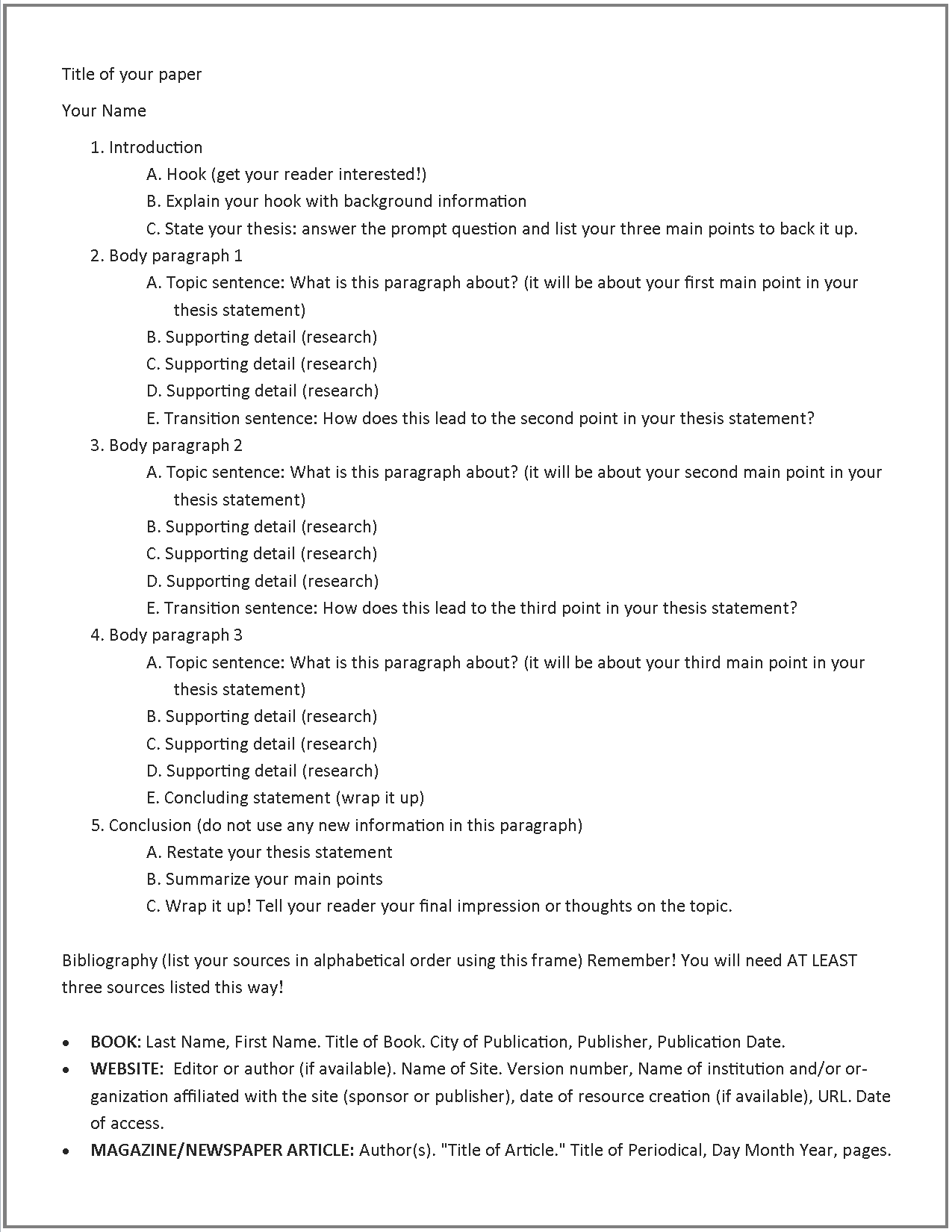
Seems easy enough, right? Take a look at my completed outline example below using today’s example prompt: Of all the animals wild or domesticated, write about your favorite. Include interesting facts about this animal in your essay.
Your outline will keep you organized and it will serve as a place to hold your research. As you find interesting facts or information about your topic add them to your outline. Remember to keep track of where you got your information.
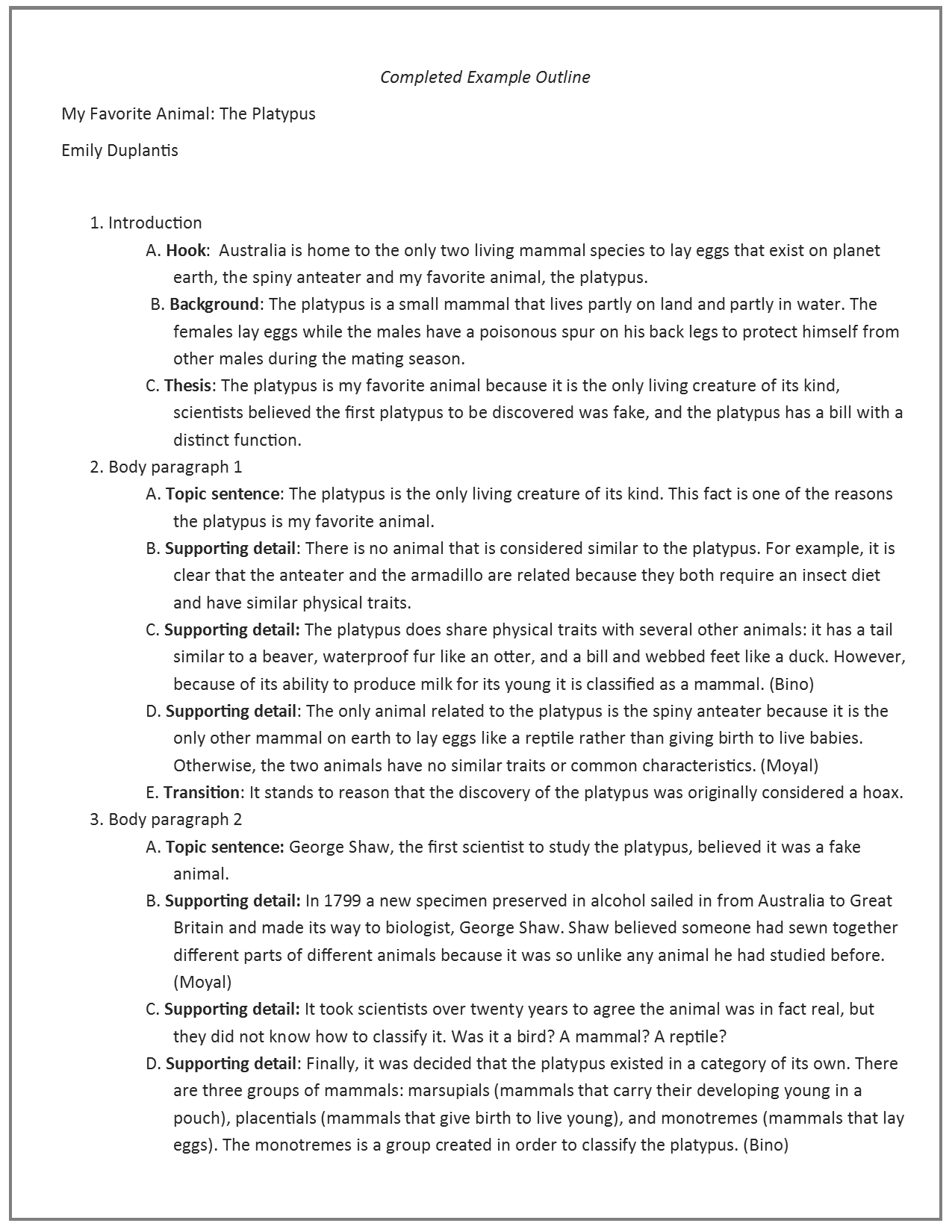
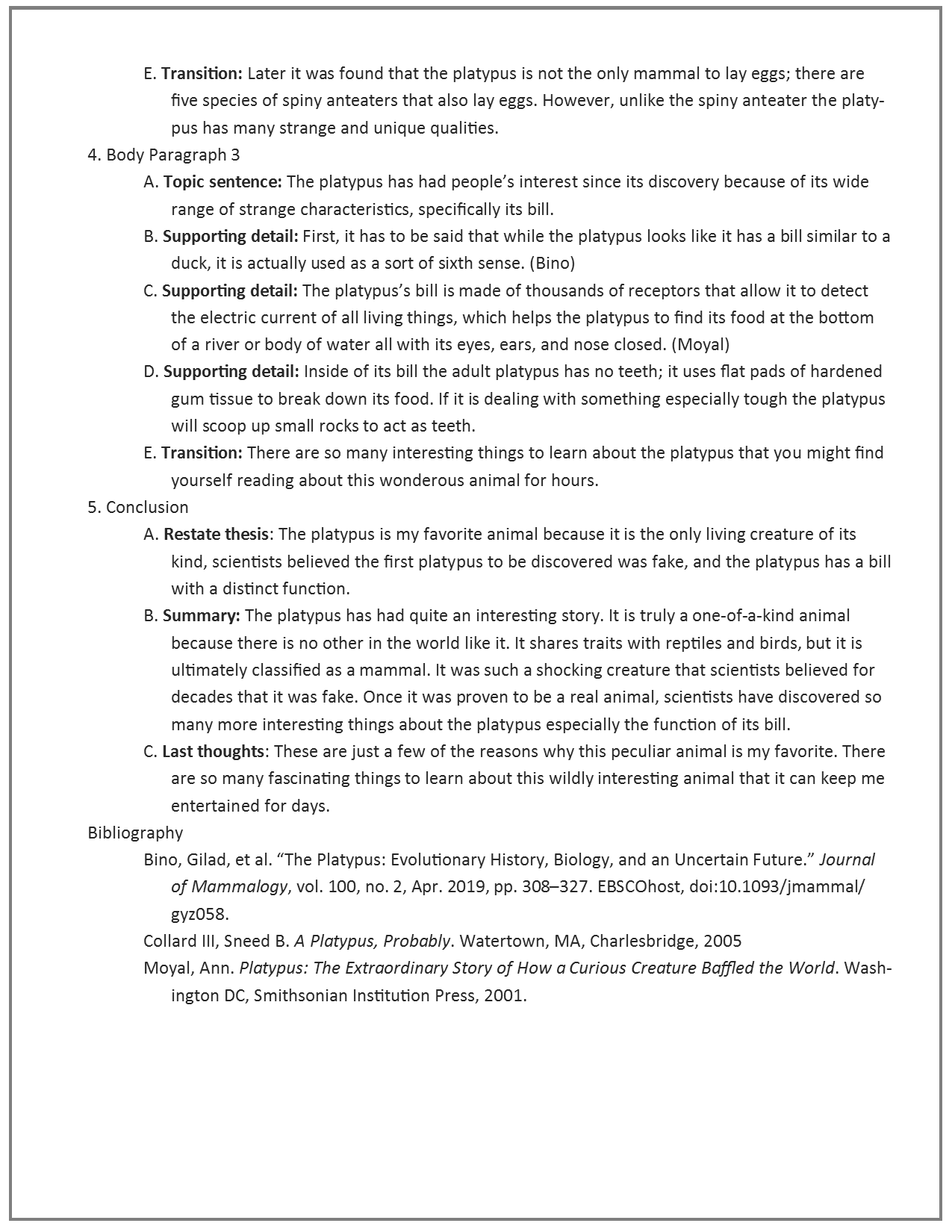
How do I format my essay once it is written?
Your teacher may require you to write in what is called “MLA format.” This is a standard writing format for school papers. You will begin by being sure your margins are one inch (this is standard when you open a new word document). Next, you want to set your line spacing to double, this helps your teacher to read and make corrections to your writing. The font must be size 12, and the font must be Times New Roman. Lastly you will begin your paper with your heading. MLA format states that your four-line heading should be aligned to the left and read as follows: your full name, your instructor’s name, class name, and the date you are turning it in.

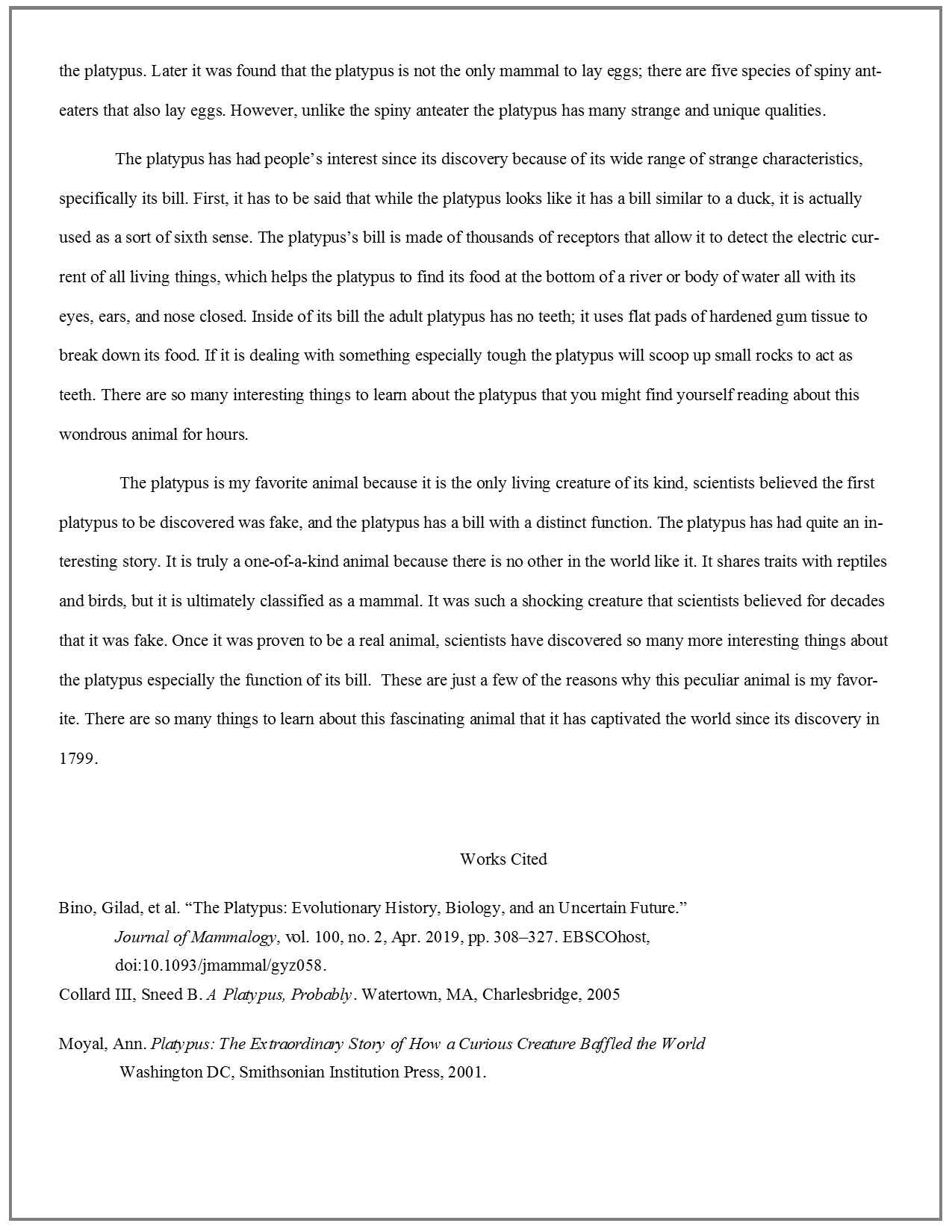
After reading through the example outline and example essay, you may find that my outline does not match my essay exactly. This is because as you are transferring your information from outline to essay you must edit—check spellings, reword phrases to make sense, and add transition words where they are needed. Also, a friend was able to review my work and found a few things I needed to change so that my writing made sense. Remember, your outline is just your frame to keep your information organized. It is OK to change it or reword things as you begin working on your draft.
Recommended Books
-Emily Duplantis, Youth Services

